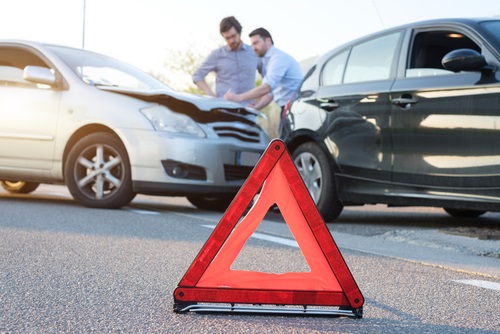
When you go to work, run errands, or simply pick up your kids from school, you have to contend with bad driving conditions, construction zones, and irresponsible drivers. We, as drivers, try our best to prevent serious crashes to keep ourselves safe on the road, yet accidents do happen occasionally.
In the third quarter of 2021, there will be roughly 284 million vehicles on the road, according to a Statista study. If you think, given that information, that there will be a lot of accidents, given the number of cars on the road, you are right. According to reports, just in the United States, 6.6 million cars were involved in incidents as of 2019.
Negligence - A term used to describe who caused an accident.
Comparative Negligence - A method for determining who is to blame when more than one party is at fault for an accident.
Vicarious Liability - A legal theory that blames an accident on a third party who wasn't there. For instance, if a motorist was involved in an accident while at work, the employer could be held vicariously accountable.
Collision Coverage - Auto insurance coverage that reimburses drivers for damage caused by accidents.
Comprehensive Coverage - A vehicle insurance policy that compensates drivers for the damage they sustain to their vehicle that is not due to an accident.
Uninsured Motorist Coverage - Vehicle insurance that reimburses drivers for losses incurred in collisions with drivers who are either uninsured or have insufficient insurance to fully cover all losses.
You can make a claim with your insurance provider if your vehicle is damaged or if you are hurt in an accident. American insurance firms pay out more than $170 billion a year in settlements for auto insurance claims. Although insurers and governments could follow different approaches, the basic steps are typically the same.
You should be aware of two distinct categories of claims. The first kind is a first-party claim. You must file a claim with your own insurance company for several insurance coverages, such as uninsured motorist coverage, collision and comprehensive coverage, or towing. There are also claims made by outside parties, which are called Third-party claims. Third-party claims are those that you submit to the insurance provider of another person. The most typical situation for a third-party claim is when you are hurt because of someone else's negligence.
Dealing with insurance companies after a car accident can be difficult and unpleasant. Regardless of the situation, insurance companies should always act in the best interests of their clients. Sadly, this isn't always the case because certain insurance companies could treat their clients dishonestly, which could lead to more serious problems for the policyholder.
Cornell Law defines bad faith in a transaction as dishonesty or fraud. The phrase "bad faith" can refer to a dishonest belief or purpose, an untrustworthy execution of responsibilities, a disregard for fair dealing laws, or fraudulent intent depending on the context, and frequently refers to the violation of a contractual agreement.
These are just a few of the many great examples of how your insurance provider could act in bad faith. Additionally, it's important to remember that any bad faith claim you make against your insurance provider is separate from any claim you make against the other driver in the accident.
The use of ridesharing services such as Uber and Lyft, among many others, has increased among tourists and those who commute to work every day. In general, ridesharing is a fairly dependable and practical mode of transportation.
However, just like almost everything we deal with on a daily basis, rideshares have their own set of concerns. If an accident occurs in a rideshare, whether you are the driver or a passenger, it is treated the same as any other accident, and the individual who was at fault is frequently held accountable. You frequently need to provide evidence of three things to determine who is accountable:
Identifying fault in a ridesharing accident is the same as identifying fault in a regular accident, so don't worry too much. When a victim of a rideshare accident seeks compensation from the party at blame, insurance plays a crucial role that distinguishes them from other types of accidents.
The majority of drivers have personal auto insurance. This means that you can file a claim with the at-fault party's insurance company to get money to pay your medical costs and other losses following an automobile accident.
However, a driver is not protected when they use their vehicle for work because of a business-use exception in personal auto insurance coverage. Accordingly, the rideshare driver's personal auto insurance policy does not provide liability or collision coverage once the passenger is picked up by the driver.
Being prepared for the first meeting is a good idea if you decide to file a case and have selected a lawyer of your choosing. Specific papers, such as the following, must be presented to your lawyer:
In today's society, careless driving is all too common and can cause significant injury or even wrongful death. While operating a vehicle, a negligent driver may be eating, smoking, or even just looking at their phone. These driving carelessness traits frequently result in a variety of reckless driving behaviors.
Some of the most obvious examples of negligent driving are listed below:
It is a legal requirement in every state for drivers to remain at the site of an accident so that they can assist other accident victims and exchange contact and insurance information. Drivers who don't stop could face legal action for an auto accident as well as charges in court for hit-and-run.
More than 2,500 hit-and-run fatalities occurred in 2020, up 26% from 2019, according to The National Highway Traffic Safety Administration (NHTSA).
It makes sense that you would want to find the driver if you were harmed in a hit-and-run and they fled the scene. Only if you find the hit-and-run drivers can you hold them accountable for their crimes and the damage they caused. However, it is exceedingly dangerous to pursue a hit-and-run driver, so you should never do this, regardless of how desperate you are to find the offender. The best course of action is to request assistance from the police.
If you can't track down the hit-and-run driver, you'll regrettably have to rely on your own health and auto insurance to pay for some of your expenses. Additionally, there is a chance that you might be qualified to submit an uninsured motorist claim if you have the necessary coverage.
Every state mandates that drivers carry insurance. The "at-fault" system, used by the majority of states, requires drivers to buy liability-based auto insurance to pay for accident-related costs. Naturally, the at-fault driver's insurance company won't pay you if you don't know who was at fault.
In an at-fault state, you will very likely have to rely on your own insurance policy for reimbursement or, if you can't find the hit-and-run offender, file a civil action. The crime victim compensation board in your state might be able to help. Even when a criminal has not been proven guilty, these government-run compensation programs can aid victims of crime in recovering losses.
Your own "personal injury protection" (PIP) auto insurance would most definitely cover your medical costs, missed wages, and other accident-related expenditures if you were hurt in one of the roughly 12 no-fault insurance states. PIP must be used in no-fault states (and an optional add-on in most at-fault states). No matter who was at fault for the accident, you can still file a PIP claim.
The majority of vehicle problems, such as faulty tires, airbags, seat belts, and door locks, are to blame for the 42,000 fatalities and 6 million injuries linked to car accidents in the United States alone each year.
Choosing who to sue can be quite difficult, and in some cases, the plaintiff may elect to sue everyone in the "chain of distribution." The plaintiff won't need to show that a manufacturer was negligent or careless, unlike personal injury cases brought in connection with automobile accidents. Instead, the legal principle of product liability is frequently the foundation for claims involving motor vehicle defects.
Faults that could subject one or more of the aforementioned parties to liability fall into one of three categories:
LegalMatch defines "chain of distribution" as the collection of businesses or organizations involved in transporting a good from its point of origin to its final destination.
A product may develop a fault in the chain of distribution as a result of one of the partners' negligence. As a result, various parties may be held liable for the plaintiff's injuries in the event that a product was defective. Rarely may a situation have many parties at fault. Each manufacturer is held accountable based on its share of sales in the region where the harm occurred, where the party who was harmed is unable to identify the business that produced the defective product. It is termed as "market share liability" in this circumstance.
Q: What should I do if an uninsured driver hits and damages my vehicle?
A: Call the police. It is crucial to call the police if there was an uninsured driver in the accident since the report will expedite the claims process and help you get your expenses reimbursed.
Q: Having filed a personal injury claim, am I required to present in court?
A: Your case won't go to trial if the negligent driver's insurance company agrees to pay the sum your lawyer believes your case is worth and you choose to settle for that amount. However, in rare cases, a formal trial procedure is necessary due to irreconcilable differences with insurance providers.
Q: My car's airbags did not inflate when I was in a crash. Can I sue the manufacturer of the car?
A: You certainly can. If your airbags aren't working properly, you may choose to launch a lawsuit against the airbag manufacturer, the car manufacturer, or another accountable party.
Q: After a car accident, do I need legal counsel?
A: To obtain compensation following a car accident, it is not required to retain legal counsel. However, in order to concentrate on your health and recuperation while continuing to pursue legal action, it is strongly recommended that you have legal counsel and representation.
Q: What steps should I take in the event of an automobile accident?
A: No matter how small the incident may have been, you should always call the police. Make sure to record the names and addresses of any witnesses to the incident and request a copy of the driver exchange information form from the responding police officer. You must also notify your insurance company of the incident.
